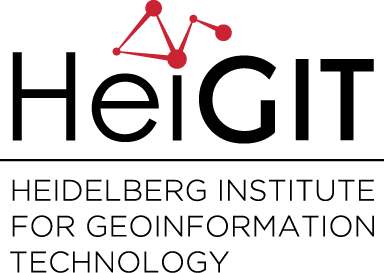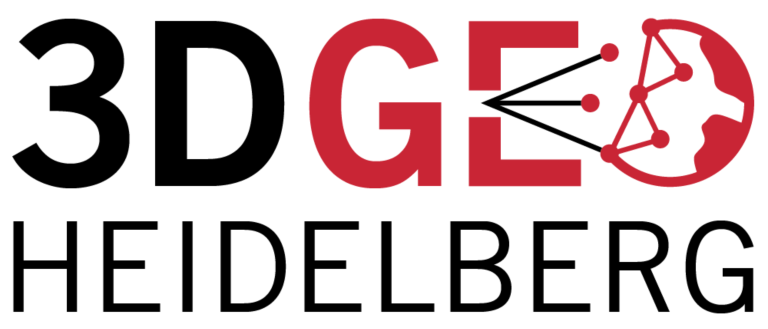Category: Research
-
Projekt “TARDUR” startet: Open-Source-Routenplanung mit zeitabhängigen Beschränkungen
Zeitabhängige Sperrungen und Nutzungsbeschränkungen von Straßen werden bislang in keiner frei verfügbaren Software zur Routenplanung genutzt. In dem im März gestarteten Projekt “TARDUR – Temporal Access Restrictions for Dynamic Ultra-Flexible Routing” gehen die Universität Heidelberg und die Firma GraphHopper dieses Problem an. Das Projekt wird im Rahmen der Förderrichtlinie Modernitätsfonds (“mFUND”) mit insgesamt 100.000 Euro…
-
meinGrün Umfrage: Wofür nutzen Sie städtische Grünflächen?
Alle Jahre wieder blühen die Kirschbäume vor unserem Institutsgebäude in voller Pracht und laden Passanten allen Alters ein zum Verweilen. Städtische Grünflächen wie diese leisten einen wichtigen Beitrag zur urbanen Lebensqualität, indem sie viele Funktionen wie Naturerfahrung, sozialen Austausch und Erholung ermöglichen. Jedoch eignet sich nicht jeden Grünfläche gleichermaßen für jeden Einzelnen und jede Aktivität.…
-
Project “TARDUR” starts: Open-source routing with time-dependent restrictions
Time-dependent restrictions and temporal road closures are so far not considered in any freely available software for route planning. Heidelberg University and the company GraphHopper aim to address this issue in their joint project “TARDUR – Temporal Access Restrictions for Dynamic Ultra-Flexible Routing”. The project started in March and is supported by the Federal Ministry…
-
OpenStreetMap History Database – version 0.5
The OpenStreetMap History Database (OSHDB) is what powers most of the functionality of HeiGIT’s ohsome platform. The ohsome API for example, which was often showcased here in the blog, is built on top of the OSHDB. Just recently, an open access software article about the OSHDB was published. Check it out to find out more…
-
STAP19 Workshop and Compact Course Concluded
From 01-04 April 2019, the 3DGeo and FCGL research groups organized STAP19, a compact course and workshop on Spatial and Temporal Analysis of Geographic Phenomena at the Interdisciplinary Center for Scientific Computing (IWR, Heidelberg University). In a mix of lectures, invited talks and hands-on sessions, the participants learned about processing and analysis of 3D geodata,…
-
The New York Times + openrouteservice
In a recent article by the NYTimes the openrouteservice API isochrones interface was consumed to derive regions of reachability from subway stations in New York City. Their findings show that two-thirds of 550.000 residents who have difficulty walking live far from an accessible subway station. Head over to this very interesting analysis which you can find…
-
Multi-Parameter Relief Map from High-Resolution DEMs: A Case Study of Mudstone Badland
Topographic parameters of high-resolution digital elevation models (DEMs) with meter to sub-meter spatial resolution, such as slope, curvature, openness, and wetness index, show the spatial properties and surface characterizations of terrains. The multi-parameter relief map, including two-parameter (2P) or three-parameter (3P) information, can visualize the topographic slope and terrain concavities and convexities in the hue,…
-
Kick-off meeting of BMBF/MOST project “ER3DS” at Heidelberg University
On Tuesday 26 March 2019, the 3DGeo Research Group of Prof. Bernhard Höfle and the newly founded Transdisciplinary Lab (TdLab) Geography (Dr. Nicole Aeschbach) hosted a workshop on “Emission Reduction in Smart Cities Using 3D Spatial Sensing and Analysis (ER3DS)” within the frame of the collaboration and exchange project ER3DS running from 2019 to 2020. The…
-
How to become ohsome part 4: handling a snake in a notebook on another planet
Welcome back to a new episode of how to become ohsome. Yes, you’ve read the heading correctly. We are really talking about a snake in a notebook on another planet. If you are familiar with one of the most used programming languages in the GIS world, you might already know by now which snake is…
-
openrouteservice for Disaster Management: Response to Cyclone Idai
The Humanitarian OpenStreetMap Team (HOT) has launched an activation to support humanitarian operations responding to the impact of Cyclone Idai. These efforts were already supported by more than 1500 mappers of the global OpenStreetMap (OSM) community that contribute geodata about the affected regions in Mozambique and the surrounding countries. The team at HeiGIT (Heidelberg Institute for…
-
HeiGIT supports Citizien Science @ Helmholtz ThinkCamp
We are always happy to support citizen science projects at the HeiGIT. HeiGIT/ GIScience efforts already range from tools that assess the data quality of citizen science projects (see, e.g., this blog post about “Plausible Parrots“) to approaches related to data creation, like MapSwipe Analytics (learn more here). Currently, we are supporting citizen science approaches…


